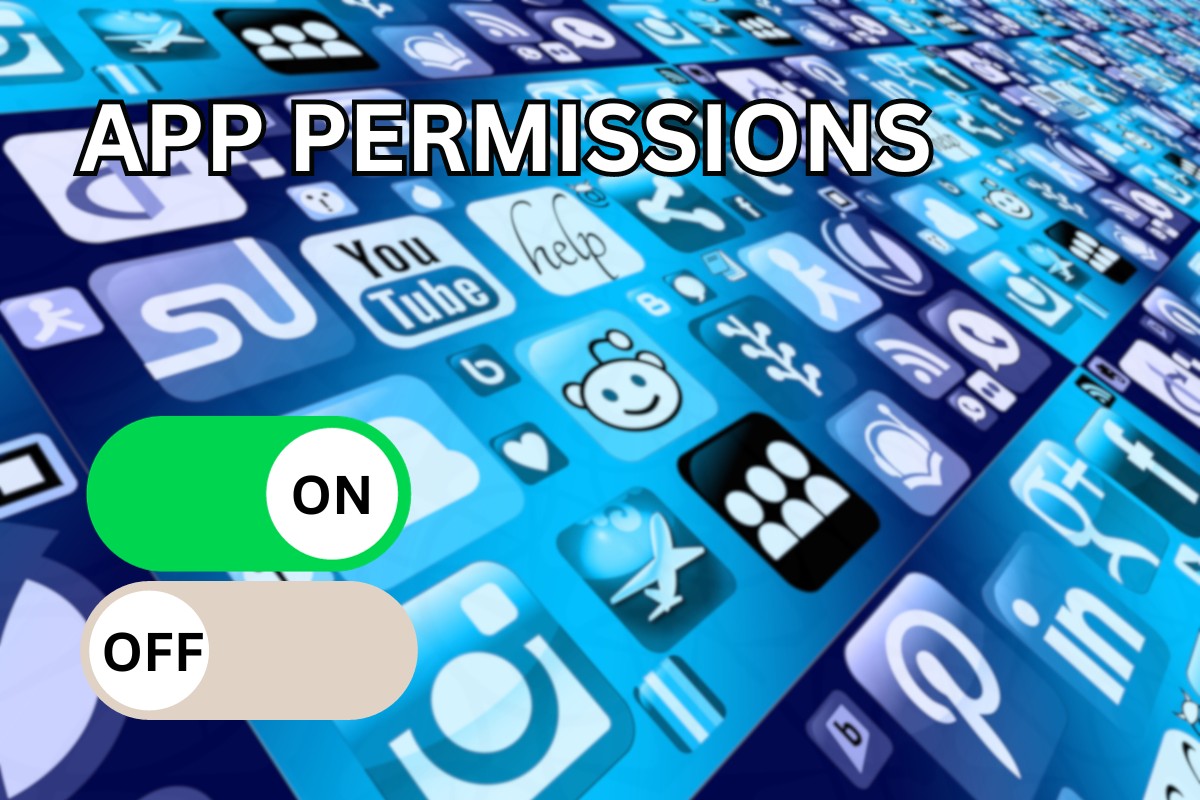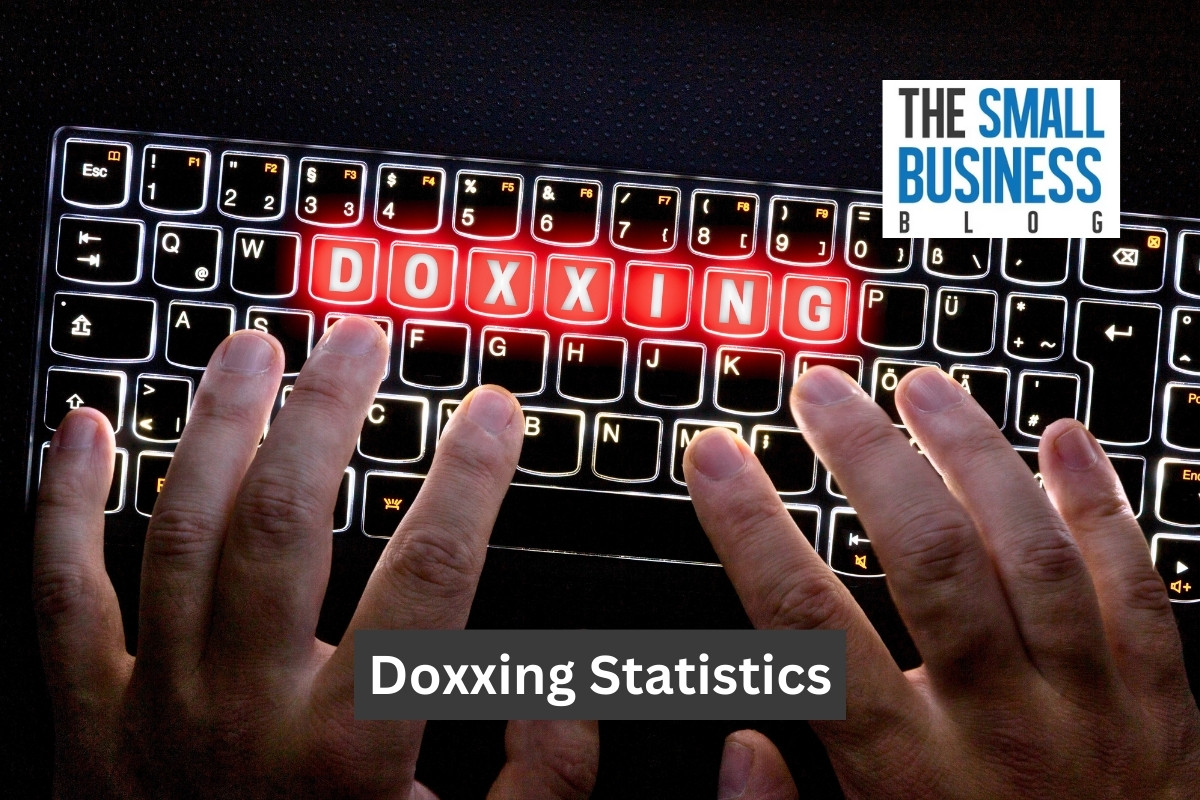It can sometimes be difficult to keep up with all the latest terms, especially as the internet has become increasingly popular.
For example, until recently many people wouldn’t have heard of the term doxxing or even realize there is an array of doxxing statistics.
Yet, despite the appearance of being a new term, this has been around since the early 1980s!
It’s time to find out more about doxxing and how it may affect you.
Post Contents
- 1 What Is Doxxing?
- 2 Key Statistics
- 3 Top Doxxing Statistics
- 3.1 1. 43 Million Americans Have been Doxxed
- 3.2 2. 90% Of Doxxing Cases Include A Personal Address
- 3.3 3. 40% Of Doxxed Victims Had Their User Name Made Public
- 3.4 4. Financial Details Are Less Likely To Be Revealed
- 3.5 5. 32% Of Doxxing Victims Will Change Privacy Settings On Instagram After An Attack
- 3.6 6. 1 In 4 Doxxing Attacks Are Personal
- 3.7 7. Doxxing Is Technically Illegal
- 3.8 8. 46% Of Personal Doxxing Incidents Result In Online Harassment
- 3.9 9. 27% Of Doxxing Incidents Result In Harassment At Work
- 3.10 10. 51% Of Doxxing Victims Experience Criminal Repercussions
- 3.11 11. Many Doxxing Cases Are Never Reported
- 3.12 12. 31% Of People Aged 18-29 Are Targeted By Doxxers
- 3.13 13. Women Are More Likely To Be Victims Than Men
- 4 How Doxxing Usually Starts
- 5 Steps To Prevent Yourself From Being A Doxxing Victim
- 6 Summing Up
What Is Doxxing?

The official definition of doxxing is “the act of revealing identifying information about someone online, such as their real name, home address, workplace, phone number, or financial and other personal information, which is then circulated to the public without the victim’s permission. “
In essence, if your personal information is revealed to someone else on the internet and you didn’t approve it, you’ve been a victim of doxxing.
In the majority of cases, people have obtained personal information and published it in order to cause harm to the victim.
It can simply be emotional pain, caused by not knowing who has your details and what they may do with them.
In some cases, it can lead to a more genuine threat to life.
For example, one of the earliest known experiences of doxxing was when anti-abortion activists managed to locate abortion providers’ personal phone numbers and addresses.
These were publicized and meant that anti-abortionists could target individuals.
Being a doxxing victim can be a serious issue.
That’s why you need to know the following statistics.
The truth is, today anyone can be a victim because we live in a digital world, everything is interconnected.
This makes it easier for hackers and others with malicious intent to locate and build a file on anyone.
Key Statistics
- 43 million Americans have been doxxed
- 90% of doxxing cases include a personal address
- 40% of doxxed victims had their user name made public
- Financial details are less likely to be revealed
- 32% of doxxing victims will change privacy settings on Instagram after an attack
- 1 in 4 doxxing attacks are personal
- Doxxing is technically illegal
- 46% of personal doxxing incidents result in online harassment
- 27% of doxxing incidents result in harassment at work
- 51% of doxxing victims experience criminal repercussions
- Many doxing cases are never reported
- 31% of people aged 18-29 are targeted by doxxers
- Women are more likely to be victims than men
Top Doxxing Statistics
1. 43 Million Americans Have been Doxxed
As a sign of how serious doxxing has become, a recent survey found that 43 million Americans had been doxxed.
That’s approximately 15% of the population in the US.
If that’s not bad enough, the number of doxxing incidents is increasing, it’s expected this figure will double in the next five years.
It’s worth noting that 62% of people asked knew someone who had been doxxed.
That means this issue is closer to home than you may think.
It’s worth mentioning that cases of doxxing often go unreported.
It’s likely because victims are either embarrassed or too scared.
It means the actual number of people affected could be much higher.
(Safehome)
2. 90% Of Doxxing Cases Include A Personal Address
Doxxing targets personal information.
It can mean publicizing your real name when you don’t want it known.
It also applies when financial details, such as your bank account details or credit card number, are stolen and posted online.
These events are inconvenient and are likely to cause you stress, but some are easier to rectify than others.
Personal data that can’t easily be changed, such as your name and address can cause far greater concern.
It’s generally not easy or desirable to move but you will constantly be worrying about who may turn up at your door.
That’s why it’s particularly alarming that an NYU study completed in 2017 found out of 5,000 files analyzed, 90% of them included personal addresses.
Over half of them also showed a personal email address and 61% of the files had phone numbers.
The more personal the data the more desirable it appears to be.
(Garbo)
3. 40% Of Doxxed Victims Had Their User Name Made Public

It’s not just physical addresses which can cause an issue for victims.
A recent study found that in at least 40% of cases, the online user names of the victim were uncovered and posted online.
This may not sound serious, however, most people have a series of accounts which simply use a user name to help maintain privacy.
Having all your user names posted with your real name compromises everything you’ve been doing.
It’s especially relevant if you’re using an account with just a user name to comment on hot topics.
Approximately the same percentage of cases also revealed the victim’s IP address.
Criminal elements can easily track an IP address to locate a real address.
(Garbo)
4. Financial Details Are Less Likely To Be Revealed
This statistic reveals the true reason why doxxing happens.
In many cases, it’s a personal and malicious attack, not an attempt to deprive the victim of money.
Of course, that’s not necessarily better as personal attacks can be sustained for a much longer period of time.
The good news is that just 4.3% of cases involve credit card numbers being displayed publicly.
Only 2.2% of cases involved social security numbers, and around 9% involved other financial information.
(Garbo)
5. 32% Of Doxxing Victims Will Change Privacy Settings On Instagram After An Attack
The information needed for a doxxing attack can be collected from a variety of places.
Naturally, social media sites are the most obvious target.
Too many people include all their personal details online, making it much easier for them to be doxxed or targeted in any other way.
Unfortunately, most people don’t see the issue until after they have been the victim of an attack.
The latest figures show that 32% of people change privacy settings on Instagram after a doxxing attack.
A further 25% of people did the same on Facebook.
Interestingly, when anti-abuse measures were brought in, Instagram recorded 10% of users adjusted their privacy settings and approximately 3% of Facebook users.
6. 1 In 4 Doxxing Attacks Are Personal
It may not seem surprising that doxxing attacks are personal.
However, the truth is that one in four attacks are performed by someone who personally knows the victim.
It could be an ex-partner, employer or employee, or even a jealous family member/friend.
It’s easier for these people to perform doxxing as they already know information about you.
The slightly better news is that, in 52% of cases, doxxing attacks are performed online by strangers.
Strangers can be more malicious but it is easier to protect against this type of attack.
The more concerning cases are the 24% of doxxings related to personal revenge and the 20% of cases related to gaming disputes.
It can be harder to define when the issue has stopped.
It should be noted that prevention is definitely the better option in this scenario.
While the authorities will try, the truth is it’s incredibly difficult to locate the perpetrator and then prosecute them.
That’s why, in 33% of cases, the attack isn’t even reported.
(Safehome)
7. Doxxing Is Technically Illegal
It’s difficult to locate where a doxxing attack started and to confirm who performed the attack.
This matter is made more complicated by local laws.
For example, in the UK doxxing is illegal.
It’s listed as a criminal offense which means, anyone caught doing it can face a hefty fine and/or prison time.
The activity is covered by the Computer Misuse and Data Protection Acts.
However, the law is less clear in the US.
Technically, doxxing is illegal as, in order to target someone you’ll need to stalk, harass, or intimidate someone.
It’s the aim as well as often the way to get more information.
Unfortunately, there is no federal law that makes docking illegal.
This means, in many cases, doxxing falls into a gray area, making it extremely difficult to prosecute.
(Besedo)
8. 46% Of Personal Doxxing Incidents Result In Online Harassment

Statistics show that 40% of doxxing victims have their personal names released.
That may not seem so harmful, but in many cases, the name is disclosed with an unsavory fact.
It’s important to note that fact doesn’t have to be true.
The best ‘facts’ are topical, ensuring it will annoy someone.
That means the doxxing victim will get a lot of abuse.
In fact, they can get repercussions for a single post in a variety of ways.
In a recent survey, victims confirmed that 46% of cases resulted in online harassment.
Almost as many, 38%, resulted in public shaming.
Unfortunately, 38% of incidents resulted in a friendship being lost and even more concerning was the 35% of cases which received harassment from their own family.
According to the results, 19% of doxxing incidents ended in the release of personal photos.
(Safehome)
9. 27% Of Doxxing Incidents Result In Harassment At Work
One of the main reasons for having user names is to ensure your accounts remain separate.
That means you can voice your own opinion or even let your hair down without worrying about what your work colleagues may think or how it reflects your business life.
Unfortunately, doxxing removes this protective screen, allowing people to see everything about you, even if you don’t want them to.
For some people, this has disastrous consequences.
As many as 27% are subsequently harassed at work.
Interestingly, 27% of victims also ended up losing their jobs. It’s not clear how many of the 27% fall into both categories.
(Safe Home)
10. 51% Of Doxxing Victims Experience Criminal Repercussions
Doxxing can simply result in embarrassment.
However, in many cases, the effects are significantly more serious.
For example, according to a recent survey, in 36% of cases doxxing victims will receive threats of violence.
This can be terrifying even if they are just threats.
Of more concern is the 33% of cases which result in identity theft.
Stealing someone’s identity allows the attacker to access funds in your name, destroy your credit, and give you a huge headache proving that you haven’t broken any laws.
Worse, the attacker can use your information to report a crime at your own address.
In a relatively new trend, known as swatting, this will trigger an armed response from the police.
You’ll be terrified when they burst in unexpectedly and, if you react badly you or a family member could end up injured.
In total, 51% of doxxing victims surveyed said they had experienced either threats or identity theft.
(Safe Home)
11. Many Doxxing Cases Are Never Reported
The biggest problem with the doxxing statistics is that they consistently underestimate the issue.
The sad truth is, because law enforcement has limited power in these situations, many people don’t even report the incident as having happened.
Victims will almost always report the issue if their family is receiving harassment.
In 89% of cases, this is reported to help protect everyone in the family.
The problem has also been reported in 88% of cases where physical violence has been threatened or even occurred.
However, the numbers then start to drop.
Only 83% of people will report harassment at work and just 79% report identity theft.
But, the figures for online harassment, at 65%, and photos being distributed of the victim, at 54%, are concerning.
It appears people are less concerned about reporting doxxing when it is only the individual in the victim in the firing line.
(Safe Home)
12. 31% Of People Aged 18-29 Are Targeted By Doxxers
It’s estimated that over 80% of adolescents and young people living in either Europe or the US have one or more social media accounts.
That’s not surprising as it’s the most popular way to communicate.
However, this does make them possible targets for doxxers.
Of particular concern is the latest research by Pew Research which shows that 31% of adults between the ages of 18-29 have been targeted by doxxers.
This age range appears to be the ones most likely to suffer doxxing attacks, perhaps because they belong to a generation accustomed to the internet.
Unfortunately, in many cases, this is also the generation which is least likely to take appropriate security measures and protect their information from being stolen.
(Pew Research)
13. Women Are More Likely To Be Victims Than Men

Further research by Pew highlighted that while 13% of men say they have experienced some form of doxxing, a staggering 21% of women report the same.
This shows that, despite being a digital form of attack, women are still the primary victims.
However, a recent survey in a Hong Kong secondary school found that more girls than boys were likely to conduct doxxing attacks.
The survey also noted that girls were likely to be after social information while boys were more likely to obtain personal identification material and find out about someone’s living arrangements.
In many cases, those who had, or were intending to dox someone else, had previously been victims of doxxing themselves.
(Pew Research)
How Doxxing Usually Starts
Doxxing usually starts with a close friend, often a partner whom you’ve been intimate with.
It doesn’t matter if that’s online or offline dating.
In other words, they have your trust.
A nasty breakup can tempt them to release personal information which could put you in harm’s way.
In other cases, your personal details are uncovered by strangers online, media companies, and hackers.
In most cases, they will already have an issue with you.
The person attempting the doxxing will start by finding out something small, such as your real name or the town you live in.
This will help them research you and find out additional information.
They can then verify this with you without drawing your attention to it.
They will then build on this information using a variety of mediums.
In some cases that means hacking your accounts.
In others, it’s simply a case of looking at shared documents and seeing who edited or created the document.
It’s also possible they will log your IP address and track it.
They can’t necessarily backtrace the IP address to get an address.
However, intercepting it may allow them to access your Wi-Fi network and obtain data as you send it to and from internet sites.
This type of grab can easily reveal financial data.
Steps To Prevent Yourself From Being A Doxxing Victim
Anyone can take steps to prevent themselves from being a doxxing victim.
The best approach is to start protecting yourself today.
There are several things you can do.
Remove Your Information
There are various sites which profess to provide a public service.
These include phone number lookups and sites that offer you the opportunity to search public records.
The idea is you can enter any name and see their phone, address, marriage, public criminal records, and more.
The search can be done by anyone anonymously.
Get your name off their system by logging individual requests for them to remove your data.
Alternatively, use a data removal service and they’ll contact all the relevant sites for you.
This is generally the better option as the request needs to be resubmitted every three months.
Use A VPN

A Virtual Private Network can be added to your current system for a few dollars each month.
It can be used across multiple devices and you can choose your location.
Using a VPN Makes it very difficult for anyone to trace your IP address.
Eliminate Photo Metadata
Every photo you put online has metadata attached to it.
This is the information which describes the photo, including when it was taken and the GPS coordinates.
It even discloses the type of camera and device.
Before you post any image online remove the metadata, it will make it harder for someone to locate you.
Make Sure You Have Strong Passwords
A strong password makes it difficult for any of your accounts to be hacked.
Ideally, the password should be 10 characters and be a completely random selection of capital letters, including capitals, numbers, and even a symbol.
Change your passwords regularly to ensure they don’t get hacked and consider using a password manager.
Check Google Results Regularly
Type your name into Google and see what comes up.
Anyone can do this.
If you feel there is too much information about you then you can email the website involved and ask them to remove your data.
Skip Online Quizzes
Online quizzes come in a wide variety of forms and are generally fun.
However, they can also be a great opportunity for others to find out information about you.
It’s best to avoid doing them.
If you really want to do the quizzes, don’t disclose any personal information and do use your VPN.
It will help to keep you safe.
Review Permissions In All Apps

Whenever you download an app you’ll be given an option to accept their conditions.
Most people do it without a second thought.
However, that may mean you’re allowing your personal details to be exposed.
Check the app permissions and adjust the settings to ensure you have the maximum amount of privacy possible.
Don’t forget that settings can be changed by the app provider, it’s a good idea to review them regularly.
Keep Personal Details To A Minimum
Finally, make it as difficult as possible for anyone to dox you by minimizing your personal details available online.
In other words, give the bare minimum details when opening accounts and doing anything else online.
Summing Up
The above doxxing statistics make fairly grim reading.
The truth is that this is a serious issue and law enforcement is often powerless to do anything about it.
Everyone likes, and even needs, to use social media.
However, this makes you vulnerable to becoming a doxxing victim.
It doesn’t have to be the case, simply take all the above precautions, monitor your accounts carefully, and if it does happen to you, don’t be afraid to report it.
With the right effort, it’s possible that the doxxing statistics will go down, instead of up.






























